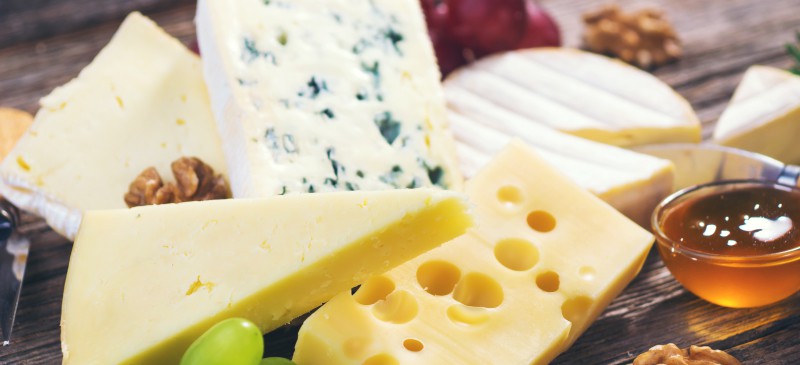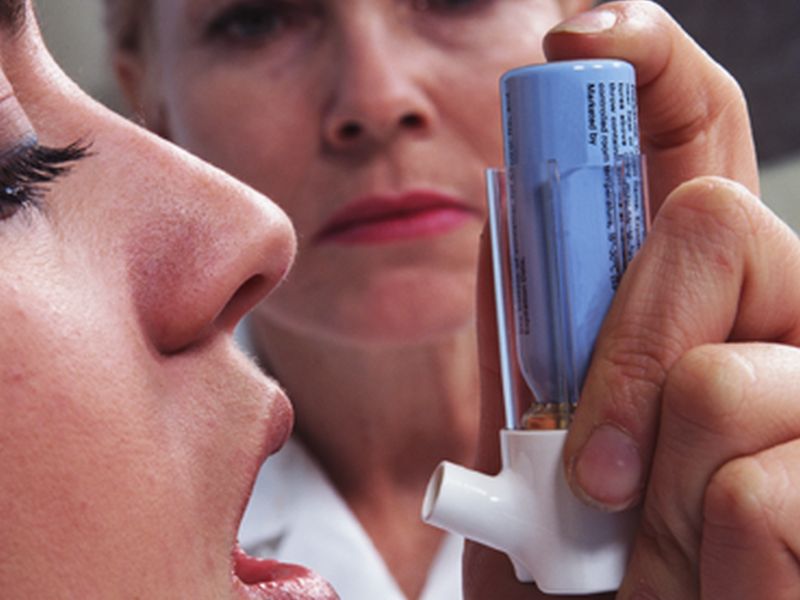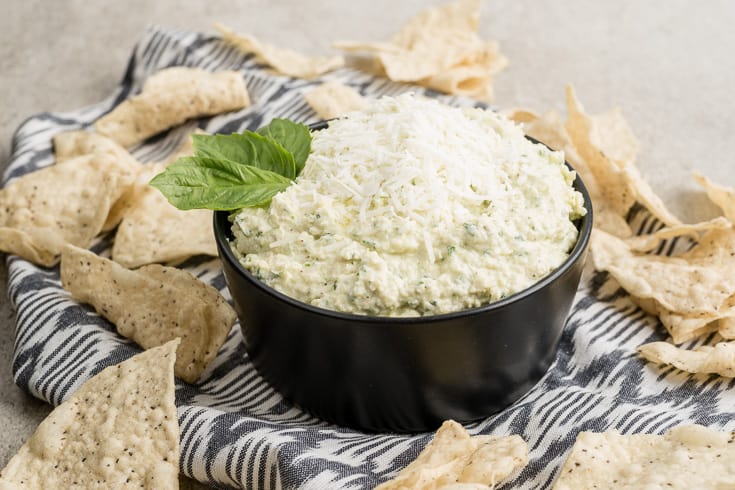Vitamin K2 Foods Benefit
Cardiovascular Health

Full-fat cheeses, eggs and beef liver might not be the types of foods that come to mind when you think about eating a heart-healthy diet. But, you’d probably be surprised to know that in recent years, one of the most researched nutrients in the field of cardiovascular health has been vitamin K2, found in these very foods.
What are the benefits of vitamin K2? While vitamin K1 has the important role of preventing blood clots and bleeding disorders, K2 works differently.
According to a 2019 study published in the International Journal of Molecular Sciences, K2 benefits include helping with nutrient assimilation, growth in infants and children, fertility, brain function, and bone and dental health. Unfortunately many people don’t get enough of this type from their diets.
Something that makes vitamin K unique (both types: K1 and K2) is that it’s not usually taken in supplement form. K2 seems to be much more beneficial when obtained naturally from vitamin K foods.
Unlike vitamin K1, which is mostly found in plant foods like leafy greens, you get K2 from animal-derived foods, like grass-fed meats, raw/fermented cheeses and eggs. It’s also produced by the beneficial bacteria in your gut microbiome.
What Is Vitamin K2?
While we hear the most about vitamin K1 and K2, there are actually a bunch of different compounds that fall into the “vitamin K” category. Vitamin K1 is also known as phylloquinone, while K2 is known as menaquinone.
Compared to many other vitamins, the roles and health benefits of vitamin K2 were only recently discovered. What does vitamin K2 help with? It has many functions in the body, but the most important is helping the body to use calcium and preventing calcification of the arteries, which can lead to heart disease. Emerging studies show a lack of this vitamin is also associated with diseases including osteoporosis.
If there’s one thing that we need K2 for, it’s preventing calcium from building up in the wrong locations, specifically in soft tissues. Low intake of vitamin K2 can contribute to plaque building in the arteries, tartar forming on the teeth, and hardening of tissues that causes arthritis symptoms, bursitis, reduced flexibility, stiffness and pain.
Some evidence also suggests that K2 has anti-inflammatory properties and may offer some protection against cancer, including research published in the Journal of Nutrition and Metabolism.
What the difference between vitamin K2 and MK7? K2 is a group of menaquinones compounds, which are abbreviated as “MK.” MK7 is one type of menaquinones that is responsible for many of the benefits attributed to vitamin K2. MK4 has been the focus of many vitamin K2 studies, but other types like MK7 and MK8 also have unique abilities.
Vitamin K2 vs. Vitamin K1
- There’s some evidence that people tend to get about 10 times more vitamin K1 (or phylloquinone) from their diets than vitamin K2 (menaquinone). Vitamin K1 deficiency is very rare, even said to be “almost nonexistent,” while K2 deficiency is much more common.
- A growing body of research now demonstrates that vitamins K1 and K2 are not only different forms of the same vitamin, but basically operate like different vitamins all together.
- Vitamin K1 is more abundant in foods but less bioactive than the vitamin K2.
- Vitamin K2 from animal foods is more active in humans. This doesn’t mean that plant foods that provide K1 are unhealthy, just that they are not the best dietary sources of bioavailable vitamin K2.
- When we eat foods with K1, vitamin K1 mostly makes it to the liver and then the bloodstream once converted. K2, on the other hand, gets distributed to bones and other tissues more easily.
- Vitamin K1 is very important for supporting blood clotting, but not as good at protecting the bones and teeth as K2.
Uses
What is vitamin k2 used for? Here are some of the major benefits and uses associated with this vitamin:
1. Helps Regulate Use of Calcium
One of the most important jobs that vitamin K2 has is controlling where calcium accumulates in the body. Vitamin K2 benefits the skeleton, heart, teeth and nervous system by helping regulate use of calcium, especially in the bones, arteries and teeth.
The “calcium paradox” is a common term for the realization by medical professionals that supplementing with calcium can somewhat reduce the risk of osteoporosis but then increases the risk of heart disease. Why does this happen? Vitamin K2 deficiency!
K2 works closely with vitamin D3 to helps inhibit osteoclasts, which are cells responsible for bone resorption.
The Vitamin D and calcium relationship is important, as vitamin D helps transport calcium from the intestines as it digests into the bloodstream. Unfortunately, vitamin D’s job is done at that point. Next, vitamin K2 must activate one of its dependent proteins, osteocalcin. Research shows it then takes calcium out of the bloodstream and deposits it into bones and teeth.
For the best overall health benefits, it’s important to get enough calcium, vitamin D3 and vitamin K. Depending on your age, health and diet, you may need to take a vitamin D3 supplement, and possibly other supplements, too.
Vitamin K2 is essential for the function of several proteins in addition to osteocalcin, which is why it helps with growth and development. For example, it’s involved in the maintenance of structures of the arterial walls, osteoarticular system, teeth and the regulation of cell growth.
2. Protects the Cardiovascular System
Vitamin K2 is one of the best vitamins for men because it offers protection against heart-related problems, including atherosclerosis (stiffening of the arteries), which are the leading causes of death in many developed countries. According to the Centers for Disease Control and Prevention, every year more than half of deaths due to heart disease are in men.
A 2015 report published in the Integrative Medicine Clinician’s Journal explains that
Vitamin K2 is associated with the inhibition of arterial calcification and arterial stiffening. An adequate intake of vitamin K2 has been shown to lower the risk of vascular damage because it activates matrix GLA protein (MGP), which inhibits the deposits of calcium on the walls.
The Rotterdam Study, a very large study done in the Netherlands that followed more than 4,800 adult men, found that the highest intake of vitamin K2 was associated with the lowest chances of suffering from aortic calcification. Men who consumed the most K2 were found to have a 52 percent lower risk of severe aortic calcification and a 41 percent lower risk of coronary heart disease.
The men in the study with the highest K2 intake also benefited from a 51 percent lower risk of dying from heart disease, and a 26 percent lower risk of dying from any cause (total mortality).
A 2017 study found that this vitamin was associated with a 12 percent increase in maximal cardiac output and that supplementation seemed to improve cardiovascular function in diseased patients. It seems to do this by restoring mitochondrial function and playing a “key role in production of mitochondrial adenosine triphosphate” (ATP).
3. Supports Bone and Dental Health
For decades, vitamin K was known to be important for blood coagulation — but only recently human studies have uncovered how it support bone health and protect against vascular diseases, too.
According to a 2017 article published in the Journal of Nutrition and Metabolism, “K2 may be a useful adjunct for the treatment of osteoporosis, along with vitamin D and calcium.”
Another 2015 meta-analysis supports the hypothesis that “vitamin K2 plays kind of a role in the maintenance and improvement of vertebral bone mineral density and the prevention of fractures in postmenopausal women with osteoporosis.”
K2 benefits the skeletal system by taking calcium and helping usher it into bones and teeth to make them solid and strong. A number of animal and human studies have investigated whether or not vitamin K2 can be useful for helping prevent or treat fractures, osteoporosis and bone loss.
Certain clinical studies have found that K2 slows the rate of bone loss in adults and even helps increase bone mass, plus it may reduce risk of hip fractures and vertebral fractures in older women.
K2 can enhance osteocalcin accumulation in the extracellular matrix of osteoblasts inside bones, meaning it promotes bone mineralization. A 2018 review reports that there is also evidence to support the effects of vitamin k2 on differentiation of other mesenchymal stem cells into osteoblasts.
Additionally, it helps maintain the structure of the teeth and jaws. Many traditional cultures included K2 foods in their diets because they believed it could help prevent cavities, tooth decay and plaque formation. This impact was observed in the 1930s by dentist Weston A. Price, who found that the primitive cultures with K2-rich diets had strong, healthy teeth although they’d never been exposed to western dental hygiene.
It turns out that getting plenty of K2 during pregnancy is also important for fetal growth and bone health. During fetal development, having limited osteocalcin proteins activated (which require vitamin K2) equates to undergrowth of the lower third of the facial bone and jaw structure. Some experts believe this is the reason so many children in modern society need braces.
4. May Protect From Cancer
Some research shows that those who have high amounts of K2 in their diet are at lower risk of developing some types of cancers. For example, vitamin K2 may help to protect specifically from leukemia, prostate, lung, and liver cancers.
5. Defends From Rheumatoid Arthritis Damage
In patients with rheumatoid arthritis, supplementing with vitamin K2 has been shown to result in a slowdown of bone mineral density loss and to decrease the amount of RANKL, an inflammatory compound, in the blood of subjects.
This suggests that K2 might be a useful supplement to a rheumatoid arthritis diet.
6. Improves Hormonal Balance
Inside our bones, K2 can be used to produce osteocalcin hormone, which has positive metabolic and hormonal effects.
Fat-soluble vitamins are important for the production of reproductive/sex hormones, including estrogen and testosterone. Because of its hormonal-balancing effects, women with polycystic ovarian syndrome (PCOS) and postmenopausal women can benefit from getting more K2 in their diets, according to recent studies.
K2 can also helps promote blood sugar balance and insulin sensitivity, which can reduce the risk for metabolic problems like diabetes and obesity. Some research suggests that K2 helps regulate glucose metabolism by modulating osteocalcin and/or proinflammatory pathways.
7. Helps Promote Kidney Health
K2 may benefit the kidneys by helping prevent the formation of calcium accumulation in the wrong places, the underlying cause of kidney stones. It may also do the same for other organs, too, including the gallbladder.
In addition, a lack of K2 and vitamin D has been associated in studies with a higher occurrence of kidney disease.
Foods
What foods are high in vitamin k2? Vitamin K1 is found in mostly vegetables, while K2 is found in mostly animal products or fermented foods.
K2 is a fat-soluble vitamin, so it’s present in animal foods that also contain fat, specifically saturated fat and cholesterol.
Animals help transform vitamin K1 into K2, while humans do not have the necessary enzyme to do this efficiently. This is why we benefit from getting K2 directly from animal-derived foods — and why sticking to grass-fed animal products provides the most K2.
The 20 best vitamin K2 foods include (percentages based on daily value requirement of 120 micrograms):
- Natto: 1 ounce: 313 micrograms (261 percent DV)
- Beef liver: 1 slice: 72 micrograms (60 percent DV)
- Chicken, especially dark meat: 3 ounces: 51 mcg (43 percent DV)
- Goose liver pate: 1 tablespoon: 48 micrograms (40 percent DV)
- Hard cheeses (such as Gouda, Pecorino Romano, Gruyere, etc.): 1 ounce: 25 micrograms (20 percent DV)
- Jarlsberg cheese: 1 slice: 22 micrograms (19 percent DV)
- Soft cheeses: 1 ounce: 17 mcg (14 percent DV)
- Blue cheese: 1 ounce: 10 micrograms (9 percent DV)
- Ground beef: 3 ounces: 8 micrograms (7 percent DV)
- Goose meat: 1 cup: 7 micrograms (6 percent DV)
- Egg yolk, specifically from grass-fed chickens: 5.8 micrograms (5 percent DV)
- Beef kidneys/organ meat: 3 ounces: 5 mcg (4 percent DV)
- Duck breast: 3 ounces: 4.7 micrograms (4 percent DV)
- Sharp cheddar cheese: 1 ounce: 3.7 micrograms (3 percent DV)
- Chicken liver (raw or pan-fried): 1 ounce: 3.6 micrograms (3 percent DV)
- Whole milk: 1 cup: 3.2 micrograms (3 percent DV)
- Canadian bacon/cured ham: 3 ounces: 3 micrograms (2 percent DV)
- Grass-fed butter: 1 tablespoon: 3 micrograms (2 percent DV)
- Sour cream: 2 tablespoons: 2.7 micrograms (2 percent DV)
- Cream cheese: 2 tablespoons: 2.7 micrograms (2 percent DV)
The more vitamin K1 an animal consumes from its diet, the higher the level of K2 that will be stored in the tissues. This is the reason that “grass-fed” and “pastured-raised” animal products are superior to products that come from factory farm raised animals.
Going back to the fact that vitamin K2 comes in several forms, MK7 is found in the highest concentration in animal foods, while the other types are found in mostly fermented foods. MK4 is the synthetic form of K2.
For those following a vegan diet, K2 can be hard to come by — unless you love natto! This “stinky sock” fermented soy food is an acquired taste and is also the only vegan source of K2. Fortunately, it’s also the richest source (and the food used to make the type of K2 supplement I recommend).
Dosage
How much vitamin k2 do you need each day?
The minimum daily requirement of K2 in adults is between 90–120 micrograms per day.
- Some experts recommend getting about 150 to 400 micrograms daily, ideally from K2 foods as opposed to dietary supplements.
- Overall it’s recommended to tailor your dosage depending on your current health. People with a higher risk of heart disease or bone loss (such as older women) may benefit from getting a dose on the higher end of the spectrum (200 micrograms or more).
- Those looking to maintain their health can get a bit less, especially from supplements, such as around 100 micrograms.
Is it beneficial to take vitamin K dietary supplements?
If you take a supplement that contains vitamin K, the chances are very likely that it’s vitamin K1 but not K2.
While some newer K2 supplements are now available, the type of supplement matters greatly.
- MK4, the form of K2 found in many vitamin K supplements, is a synthetic K2 with a short half-life. This means that to get the full benefit of it, you have to take it multiple times throughout the day.
- Often, an MK4 serving size is thousands of micrograms to counteract the half-life of the compound. However, MK7 derived from natto has a much longer half-life and can be taken in more reasonable doses like those listed above.
Remember that vitamin K works with other fat-soluble vitamins, like vitamins A and D, so the best way to obtain these nutrients is to eat foods that provide many different vitamins — like eggs and raw, full-fat dairy products.
Particularly for those at risk of osteoporosis, calcium should also be a nutrient you aim to eat a lot of while increasing your K2 intake.
Deficiency Symptoms
What happens if you get too little vitamin K?
Symptoms of vitamin K2 deficiency can include:
- Blood vessel and heart-related problems, like arterial calcification and high blood pressure
- Poor bone metabolism and possibly higher risk for bone loss and hip fractures
- Kidney and gallstones
- Cavities and other dental issues tied to tooth decay
- Symptoms of inflammatory bowel disease, like bloody stool, indigestion and diarrhea
- Poor blood sugar balance and higher risk for blood sugar issues and diabetes
- Metabolic problems
- Higher chance of having morning sickness in pregnant women
- Spider veins/varicose veins
Among adults living in industrialized nations, deficiency in this vitamin is considered to be rare. However, newborn babies and infants are much more susceptible to deficiency due to how their digestive systems lack the ability to produce K2.
Adults are at a greater risk of developing vitamin K2 deficiency if they suffer from any of these health conditions:
- Diseases that affect the digestive tract, including types of inflammatory bowel disease like Crohn’s disease, ulcerative colitis or celiac disease
- Malnutrition, due to calorie restriction or poverty
- Excessive alcohol consumption/alcoholism
- Use of drugs that block K2 absorption, which can include antacids, blood thinners, antibiotics, aspirin, cancer treatment drugs, seizure medication and high cholesterol drugs — cholesterol-lowering statin drugs and certain osteoporosis drugs inhibit the conversion of K2, which can greatly lower levels
- Prolonged vomiting and/or diarrhea
Risks and Side Effects
Is too much vitamin K2 bad for you? While it’s rare to experience side effects or vitamin k2 toxicity from getting high amounts from food alone, you might develop symptoms if you take high doses of vitamin K supplements.
However, for most people even high doses of this vitamin, such as 15 milligrams three times a day, have been shown to generally be safe.
Are there potential drug interactions to worry about? If you’re someone who takes the drug Coumadin, a potential side effect associated with taking too much vitamin K is increasing your risk for heart-related problems.
Too much vitamin K can also also contribute to complications in people with blood clotting disorders.
Look for a supplement that specifically lists menaquinone if you plan to supplement. Because vitamin K supplements can interact with many medications, talk to your doctor if you plan to take a vitamin K supplement and are taking any daily medications.
Final Thoughts
- Vitamin K2 (also called menaquinone) is a fat-soluble vitamin that helps with calcium metabolism, bone and dental health, heart health, and hormone balance.
- Vitamin K1 is found in mostly green vegetables, while vitamin K2 (the more bioavailable form) is found in mostly animal products or fermented foods.
- Benefits of getting more vitamin K2 from your diet include: helping to reduce your risk for calcification of the arteries, atherosclerosis, cavities, tooth decay, kidney problems, and hormonal imbalances.
- This vitamin seems to be much more beneficial when obtained naturally from foods high in vitamin K2, rather than supplements. Consuming raw, fermented cheeses and other full-fat dairy products is the best way to get adequate amounts. Eggs, liver and dark meats are other good sources.
Remember we are in this together!
Health and Wellness Associates
EHS Telehealth
WordPress: https://healthandwellnessassociates.co/



:max_bytes(150000):strip_icc():format(webp)/lemonbars14a-5795714f5f9b58173b14b1bf.jpg)









 Each year in the United States, according to the Centers for Disease Control and Prevention (CDC), about 735,000 people suffer a heart attack and 610,000 people die of coronary heart disease (CHD). That’s one in four deaths. Preventing heart disease in patients is a physician’s main goal, but early detection is the next best thing. This can lead to changes in lifestyle and medical therapies that can delay or deny the onset of a heart attack; almost 80 percent of heart disease is preventable with lifestyle changes. Many of my patients are shocked to learn about the following clues to underlying clogged arteries and heart disease.
Each year in the United States, according to the Centers for Disease Control and Prevention (CDC), about 735,000 people suffer a heart attack and 610,000 people die of coronary heart disease (CHD). That’s one in four deaths. Preventing heart disease in patients is a physician’s main goal, but early detection is the next best thing. This can lead to changes in lifestyle and medical therapies that can delay or deny the onset of a heart attack; almost 80 percent of heart disease is preventable with lifestyle changes. Many of my patients are shocked to learn about the following clues to underlying clogged arteries and heart disease.




